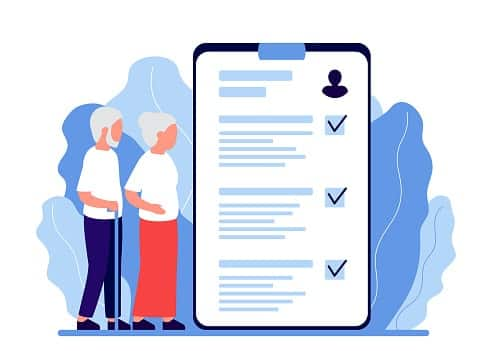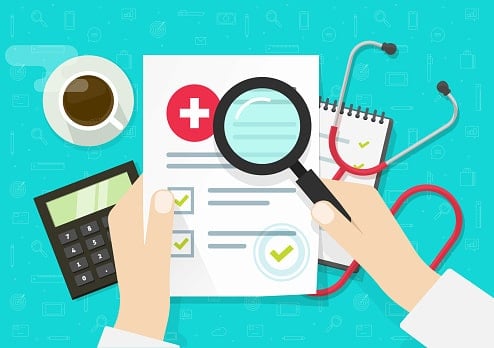Can you get health insurance if you get pregnant?
Health insurers must accept you and can’t charge higher rates because you’re pregnant.
Health insurers once considered pregnancy a pre-existing condition. They could deny you for individual health insurance or charge you much higher rates if you were pregnant.
That’s changed because of the ACA.
One exception is short-term health plans, which aren’t technically health insurance. Short-term plans don’t offer the benefits found in health insurance. For instance, the plans often don’t cover pregnancies, mental health care and prescription drugs.
Instead, you’d have to pay for all pregnancy-related health care costs if you have a short-term plan.
Best health insurance for pregnancy
The best health insurance for pregnant women depends on your eligibility, employment status and income.
Employer-sponsored health insurance, individual health insurance, ACA plans and Medicaid all offer comprehensive pregnancy coverage. Depending on your income, you can be eligible for Medicaid or CHIP, which provides excellent benefits for low to no costs.
ACA plans can also be an affordable option if you qualify for subsidies based on income.
Most work-age Americans get health insurance through their employer and that remains a way to keep down health care costs. An employer will help pay for care, which can come in handy during a pregnancy or birth.
When looking for the best health insurance, make sure to dig into the plan information. Check out the costs for:
- Premiums -- What you pay for coverage. If you get health insurance through your job, the employer will take the premiums out of your checks.
- Deductible -- What you must pay for health care services before your insurer chips in for out-of-pocket costs. Deductibles are usually more than $1,000.
- Coinsurance -- The portion of costs you pay for health care services after reaching the deductible. Your employer picks up the rest. Coinsurance varies by plan but is often 20%. So, if you have a $1,000 health care bill, the plan picks up $800 and you pay $200.
- Copays -- What you pay when you visit a doctor. These costs are often $20 to $50. Specialist visits are usually more expensive than primary care visits.
- Prescription drug costs -- What you pay at the pharmacy. Plans usually have different drug cost classifications. For instance, a generic may cost much less than a brand medication.
Weighing cost is critical when choosing a health plan. It’s especially vital if you’re expecting or plan to have a child. Choosing a plan with a lower deductible is usually a better choice if you’re pregnant or plan to have a child. Otherwise, you’ll have to pick up more of the costs when you need health care services.
In addition to costs, make sure you review the plan’s provider network. Health plans contract with providers and hospitals, which are considered in-network. You’ll pay more for health care if you get care from an out-of-network provider.
Preferred provider organization (PPO) plans allow members to get care from out-of-network providers, but at higher costs. Health maintenance organization (HMO) plans, on the other hand, don’t pay for out-of-network care, so you’ll have to pay for all of those health care costs.
Find out more about the differences between PPOs, HMOs and other plans.
Switching health insurance during pregnancy
You’re pregnant, but need to get new health insurance. What do you do?
First off, there’s no such thing as pregnancy insurance. You can’t buy a plan just for your pregnancy. Instead, you need to get a comprehensive health insurance plan.
Here are six choices you have when looking for health insurance when you’re pregnant:
Switch to your new employer’s plan
If you lost health insurance because you’re changing jobs, you can sign up on your new employer’s plan if you qualify. However, some employers don’t offer health insurance to new employers. You may have to wait months before you’re eligible.
If you’re thinking about getting a new employer’s plan, make sure to review its provider network carefully. See if your providers and hospital are part of the plan. If they’re not part of the network, you’ll pay either more or all of the health care costs depending on the plan. In that case, it may make more sense to choose a different plan.
Go on a spouse’s health plan
If your spouse has health coverage, you can see if you can go onto that plan.
You can generally only sign up or get added to a health insurance plan during open enrollment. However, your spouse’s plan should allow you to go on the plan during a special enrollment period if you lost your job or are expecting a child.
Check the plan’s provider network to make sure your providers and hospital are part of it.
COBRA plan
If you lose your job, you’re likely able to continue the employer-based health insurance coverage through COBRA. COBRA lets you extend your former employer’s coverage for at least 18 months.
The plus side is that COBRA lets you keep the exact plan with the same provider network. The negative -- and it’s significant -- is that COBRA costs much more.
Former employers don’t contribute to COBRA plans, so instead, the former employee has to pay for all of the health care. That can be pricey. The average employer-sponsored family health plan costs more than $20,000 annually.
Individual health plan/ACA plan
Individual health insurance and ACA plans offer comprehensive health insurance.
You can compare ACA plans on your state’s exchange, also called the marketplace. The marketplace lets you compare available plans side-by-side. These plans also offer subsidies to people with household incomes under 250% of the federal poverty level. By entering in your household income, the exchange will give cost estimates with subsidies taken into account.
Health insurance companies also offer individual health insurance plans outside the marketplace. In that case, you’d buy health insurance directly through the health insurer. People with those plans don’t qualify for subsidies, but you may find a plan that better fits your needs outside of the exchanges. Individual plans without subsidies can be expensive, though.
Open enrollment for these plans is Nov. 1-Dec. 15 in most states. Some states have longer open enrollment periods. However, if you have a qualifying event, you’re eligible for a special enrollment period. Qualifying events include losing your job, moving or expecting a child.
Medicaid
Medicaid is a federal/state health insurance program for low-income Americans. These comprehensive health plans have little to no costs depending on your income.
Medicaid was once only for people living in poverty. However, the ACA allows states to expand Medicaid to allow people with household incomes of up to 138% federal poverty level. Thirty-eight states have since expanded Medicaid.
One potential issue with Medicaid is that not all providers take the insurance. So, you may have more trouble finding a provider who accepts Medicaid than if you had an employer-sponsored health plan.
Check with your state’s Medicaid program to see whether you qualify.
Children’s Health Insurance Program (CHIP)
CHIP provides health insurance for low-income children. Some states also extend coverage to pregnant women based on income.
State CHIP programs often work closely with Medicaid. CHIP plans offer comprehensive coverage like an employer-sponsored or ACA plan. That coverage comes at a lower cost, though.
Check with your state about its specific eligibility requirements and whether you’re eligible.
No matter what health insurance plan you wind up choosing, make sure you’re comfortable with the costs and that your providers are part of the plan. Keeping costs under control and having trusted providers by your side during pregnancy is critical.




